- Home
- James A. Michener
The Source: A Novel Page 3
The Source: A Novel Read online
Page 3
“In him you see the new Jew,” Eliav half-apologized. “He’s what makes Israel strong.”
“Where’s he from? He spoke like an American.”
“No one knows, really. He’s probably called Schwartz because he’s dark. He survived, God knows how, both Dachau and Auschwitz. He has no family, no history, only raw drive. Look at his arm when he comes back.”
A good-looking, husky girl in tight shorts strode to the table, dealt out some cups and saucers and began pouring coffee as if she were a laborer pouring cement. Slamming the pot down, in case anyone wanted seconds, she went off to fetch some sugar, but Schwartz had anticipated her and slapped down a sugar bowl before Cullinane.
“Americans want everything sweet,” he said, but Cullinane ignored the remark, for he was staring at Schwartz’s left arm where in blue indelible ink was tattooed a concentration-camp number: S-13741.
“Birthmark,” Schwartz said.
“You speak like an American.”
“After the war I tried living in Boston. But I came here to join the fighting.”
“Did you get your name in Boston?” Cullinane asked.
Schwartz stopped. “How’d you guess that? They were the family I lived with. Nice people but they didn’t know from nothin’. I wanted to be where the war was.”
The husky girl now returned with a second bowl of sugar, started to slam it onto the table, saw that Schwartz had got there first, and retreated with the bowl to another table. As she left, Cullinane said, “It’s refreshing to see a girl who doesn’t wear lipstick.”
“She does it for the defense of Israel,” Schwartz said belligerently.
“How’s that?”
“No lipstick. No salon dancing.”
“For the defense of Israel,” Cullinane repeated.
“Yes!” Schwartz half-snarled. “Ask her yourself. Come here, Aviva.”
The stocky girl sauntered back and said contemptuously, “I’m not one of those salonim.”
“Salonim,” Schwartz interpreted. “Those of the salon.”
“I pledged with all my friends. Never dance salon style.” She looked insolently at Cullinane and left with the awkward rhythm of a girl who excels in folk dancing, and Schwartz followed her.
“I hope Aviva’s not on the pottery crew,” Cullinane said quietly.
“Wait a minute!” Dr. Bar-El flashed. “When I was seventeen I took that same pledge. We felt then as Aviva feels now. Israel needed women who were ready to bear arms … to die at the battlefront if necessary. Lipstick and salon dancing were for the effete women of France and America.” Primly, she put down her coffee cup and said, “I’m glad the spirit still exists.”
“But you wear lipstick now,” Cullinane pointed out.
“I’m older,” Mrs. Bar-El said, “and now I fight for Israel on other battlegrounds.”
It was an odd statement, which Cullinane preferred not to explore at the moment. “I think we should get back for the meeting,” he suggested, and the four scholars wound their way along the pleasant path toward the arched stone house serving as their headquarters, but as Cullinane reached the building he happened to look south across the road and noticed for the first time the olive trees of Makor: they were incredibly old. Their existence was not measured in years or decades but in centuries and millennia. Their trunks were gnarled, their branches broken. Many retained no center wood at all, for the years had rotted away their cores, leaving only fragments standing, but these were sufficient to provide the twisted arms of the tree with life, and in the late spring the olives were covered with those gray-green leaves that made the trees so attractive. Each wind that came down the ancient road rustled these leaves, turning the aspect of the grove from green to gray to some intermediate, shimmering color. Cullinane had seen olives before, but never a grove like this, and as he was about to enter the building from which the dig would be directed, he felt himself pulled across the road to inspect one notable tree—a veritable patriarch whose gnarled trunk was merely a shell through which one could see in many directions. The tree bore only a few branches, but these were thick with maturing olives, and as the archaeologist stood inquiringly beside this stubborn relic he was as close to the mystery of Makor as he would ever be, and in the presence of this august tree John Cullinane felt humbled. It was a proper preparation for a dig and he walked in silence to the room where his paid staff and their nineteen helpers had assembled from various parts of the world in response to an advertisement he had run in various British and Continental newspapers: “An archaeological dig is proposed in western Galilee for the summer campaign of 1964 and succeeding years. Qualified experts are welcomed if they can pay their own transportation to Israel. Food, lodging, medical care provided, but no salaries.” More than a hundred and thirty experienced men and women had applied and from the list he had selected the team who now sat before him. They were dedicated scholars, eager to work at their own expense if only they could help probe the secrets that lay buried in the tell, and each was prepared to use his mind and imagination as skillfully as he used his pick and hoe.
On the blackboard Dr. Eliav had printed the exacting schedule that would govern work for the next five months:
5:00 A.M. Reveille
5:30 A.M. Breakfast
6:00 A.M. to 2:00 P.M. Work at dig
2:00 P.M. Lunch
3:00 P.M. to 4:00 P.M. Siesta
4:00 P.M. to 7:00 P.M. Work in offices
7:30 P.M. Dinner
8:30 P.M. to 10:00 P.M. Consultations
“Any questions?” Eliav asked.
In a high, petulant voice the English photographer whispered, “I don’t find any break for afternoon tea.” Those who knew how tough he could be laughed, and he was assured by Eliav that he, at least, would be provided for. “I shall resume breathing,” the English scholar said.
Eliav then turned the board around to display five lines of data summarizing former digs to remind the archaeologists of the high standards facing them. The lines read:
Now Cullinane took a pointer and said, “Gentlemen, and you very able ladies, I’ve asked Dr. Eliav to list these five earlier digs because we must remember them as we work. The dimensions are in yards and the last figure gives in square yards a rough estimate of the site actually available for digging. You’ll notice that one of the greatest was very small in size, but the results Dorothy Garrod achieved in the Carmel caves were incomparable. She seemed to be digging through deposits of pure gold. I think we could also remember profitably what Kathleen Kenyon accomplished at Jericho, because she didn’t get to that tell till it had been worked over by many predecessors. It took Miss Kenyon to dig down and find the answers. Two other digs are my favorites. Gezer was excavated by one man, Macalister, a church organist from Dublin, with the help of one man, Jemail Tabari’s uncle. But the excavation and reporting done by these two men remain a masterpiece. We’re ten times as many and we must accomplish ten times as much. But our ideal shall be Albright. We give his figures for the last campaign only. He found nothing spectacular at Beit Mirsim, but he taught archaeologists how to work scientifically. When we’re done, I want it said, ‘They worked as honestly as Albright.’ ”
He paused, then pointed to the last line. “As you can see, we’re a small tell, so we can afford to go slowly. We’ll sketch each item exactly as we find it and photograph it from several angles. Our plateau contains only four acres, but remember that in the days of King David, Jerusalem wasn’t much larger. In point of fact, this year we shall attack no more than two per cent of our total area.” He asked for maps of the tell to be distributed, and as the scholars studied the contour lines, Jemail Tabari started his briefing.
“All we know of Makor’s history appears in six tantalizing passages. Ancient Hebrew sources mention it once. When the twelve tribes were receiving their apportionments. It’s listed as a town of no significance on the border between the portion of Asher along the sea and of Naphtali inland. It was never a major city like Hazor
nor a district capital like Megiddo. In the Amarna letters found in Egypt and dating back to about 1400 B.C.E. one reference: ‘Crawling on my belly, my head covered with ashes of shame, my eyes averted from your divine countenance, I humble myself seven times seven and report to the King of Heaven and the Nile. Makor was burned.’ A commentary on Flavius Josephus provides a cryptic passage: ‘Jewish tradition claims that Josephus escaped by night from Makor.’ In a famous commentary on the Talmud we find a series of delightful quotations from Rabbi Asher the Groats Maker describing day-to-day life in our countryside. In the next seven hundred years silence, except for one brief sentence in the report of an Arab trader out of Damascus: ‘And from the olives of Makor, much profit.’ The groves we see on the other side of the road could be several thousand years old. In the Crusader period, however, we come to substantial written records, and I hope all of you will read Wenzel of Trier’s Chronicle. You’ll find three photographic copies in the library. Briefly, Wenzel tells us that Makor was captured by the Crusaders in 1099 and for about two hundred years was the seat of the various Counts Volkmar of Gretz. We’re convinced that at this level we’ve got to find something of substance. After 1291, when Makor fell to the Mamelukes, the site vanishes from history. Not even traders mention it, and we must assume that human occupation ended there. But from the bedrock of the tell, insofar as we can identify it, to the top, is a distance of seventy-one feet, and we have a right to suppose that many good things lie buried in that vast accumulation. John will explain what we’re going to do.”
“Before he does,” the English photographer interrupted, “what’s Makor mean?”
“Sorry,” Tabari said. “Old Hebrew word. Makor. Source.”
“Any significance?” the Englishman asked.
“We’ve always supposed it referred to a water supply,” Tabari replied. “But there’s no record of where the water was. If any of you have bright ideas, we’d be pleased to hear them.”
“Isn’t it hidden under the tell?” the photographer said.
“We’ve often wondered. Go ahead, John.”
Cullinane fastened a large-scale map of the tell to the blackboard and studied it. “Where to begin?” he asked. “We shall dig two trenches, but where to locate them?” He surveyed the map for several moments, then turned away to face his team. “Each dig has its special problems, but we have one I’ve not encountered before. As you know, for some years I’ve been trying to gather the funds for this dig without luck, until one night at a dinner party I chanced to mention the fact that the tell I had in mind contained a Crusader’s castle. This man to my right repeated, ‘A castle?’ When I nodded, he said, ‘That would be a great thing to dig up, a castle!’ I carefully explained that when I said castle I meant a ruined castle, but this captivated him even more. ‘Can you imagine,’ he asked his wife, ‘digging up a ruined castle?’ Before the week ended he had put up the money. Three times I explained to him that although he was interested in the castle, I was concerned with what lay below. I’m sure he didn’t hear. So at Makor …”
“We’d better find a castle,” Tabari suggested.
“And if we do, I’m sure we can jolly the gentleman along regarding the real work that you and I wish to accomplish. Now”—he returned to the map—“where do you find a castle?” He allowed the question to sink in, then said slowly, “My whole intuition warns me to start at least one trench in the northwest quadrant, but I’m deterred by two factors. The tell has a slight rise from west to east, from which I conclude that the Crusader fortress must have defied tradition and stood in the northeastern quadrant. Second, we haven’t determined where the main gate to the tell stood, and both Eliav and Tabari believe it to have been at the southwest. I’ve argued that it must be dead south in the middle of this wall. But now I’m willing to concede that the others are right. If they are, we’d have to dig in the southwest for the gate and in the northwest for the castle, and that’s putting all our eggs in the western basket. So late this afternoon I made the final choices. Here in the southwest our major trench,” and he drew a bold straight line into the tell, “and here in the northeast a trench into the castle,” and he marked a short north-south cut. The scientists relaxed. The decision had been made and it was obvious what Cullinane was doing: he would dig quickly for the Crusader castle in order to find something that would satisfy the man putting up the money; but he would dig quietly at the presumed gate area in hopes of finding those significant layers, those sherds of broken pottery, those stone fragments of wall and home, that would reveal the greater history of the tell.
When the meeting ended and the others had gone, Tabari lingered, looking dissatisfied, and Cullinane thought: Damn, he’s one of those who listens, says nothing, then comes around to warn you that he can’t approve your decision. But almost immediately Cullinane dismissed the thought as unworthy. Jemail Tabari was not like that. If he was perplexed it was for substantial reasons. “What is it, Jemail?”
“You’re right in every detail,” Tabari began.
“Except one?”
“Correct.” The Arab pointed to the big map. “Trench A is where it should be. Trench B is bound to hit the castle. What I don’t like, John, is your plan to dump the rubble in the wadi.” He pointed to the deep gully to the north of the tell and ran his long fingers lovingly back and forth across the area that Cullinane proposed to fill.
“Why not?” Cullinane asked. “It’s a natural spot for the rubble.”
“Correct,” Tabari agreed. He pronounced the word koe-rect, giving it a humorous twist. “But for that very reason it’s also a natural spot in which other things might have happened. Burials, dumps, caves. John, we’re gambling on some very big ideas here. We’re not just excavating a Crusader castle to gratify …”
“Correct!” Cullinane interrupted, using Tabari’s word against him.
“In my research one thing perplexes me … always has. Mind if we go out to the tell?” He led Cullinane up the footpath until they reached the plateau, where to their surprise they saw the figure of Dr. Eliav, kneeling on one knee at the eastern end, where Trench B was to run, and when he heard their approach he slipped quietly down the eastern slope and disappeared. “Wasn’t that Eliav?” Tabari asked.
“I doubt it,” Cullinane replied, but he knew it was.
Tabari led the way to the northern edge of the tell, from which they could look down the very steep flank and into the bottom of the wadi. It was an ugly, sharp fall, broken by one area halfway down where level land appeared for a hundred yards, before the sheer fall continued to the bottom of the gully. “The missing factor in all I’ve read,” Tabari said, “stems from the word Makor itself—source. That from which another thing springs. The life factor. Why did generation after generation of people settle here? It could only have been because there was water … and plenty of it. But we’ve no idea where it was located.”
“Where does the kibbutz get its water?”
“Modern artesian wells.”
This provided no clue, so Cullinane asked, “You think the original well may have been outside the town walls? Like Megiddo?”
“I don’t know what I think,” Tabari said cautiously. “But I don’t want you to fill up that wadi, because in a couple of years we may want to dig. Right down there.”
“Your Uncle Mahmoud is famous in the reports because he followed hunches. You want me to follow this one?”
“Koe-rect,” Tabari replied, and the dump was relocated.
Next morning Tabari distributed the small picks and hoes used by modern archaeologists—no shovel would be permitted at a respectable dig—and proceedings got off to a favorable start, principally because he followed another hunch. At Trench B in the northeastern sector he happened to see one of the kibbutzniks inspect an object and start to call a supervisor. On second thought the young man hesitated, as if he were going to place a small object in his pocket, keeping it for later sale. “Did you want me?” Tabari asked nonchalantly, walking up and h
olding out his hand.
“Yes,” the kibbutznik said. “I think I’ve found something,” and he handed Tabari a coin, which later occasioned much debate at the mess.
It had obviously been issued by some Arabic-speaking nation, but what it was doing on Makor was not so easy to determine. Cullinane argued, “It was found within a few inches of the top. It can’t signify the presence of an Arab town nobody ever heard of. Yet it looks quite old. Can you decipher it, Jemail?”
Tabari had read some of the Arabic script and was trying to untangle the rest when the photographer appeared with two books from the library showing the coins of Palestine, and after much checking back and forth proved that the coin had been issued some time around the year 1000 C.E.
“That’s hard to accept,” Cullinane protested. “That’s a hundred years before the Crusaders, and if what you say is right …” He hesitated, then used the classic complaint of the archaeologist: “That coin has no right to be there!” Later he told Tabari, “Everything would have been a lot simpler if you’d let that kibbutznik keep his damned coin and maybe sell it to some tourist in Akko. Warn your men not to dig up any facts that confuse the issue.”
But four days later the men at Trench B found something that was indeed bizarre, and when Cullinane finished his card he joked, “Tabari, somebody’s salting our dig.” This was a constant danger at an archaeological site: enthusiastic workmen, seeking to gain bonuses and also to please the foreigners whom in general they liked, were accustomed to hide things in the soil and then to come upon them triumphantly with their hoes; but cursory inspection of the new find satisfied even Cullinane that no workman could have procured this particular item for salting: it was made of gold.
The menorah, because it was so exclusively Jewish, occasioned much excitement both at the dig and at the kibbutz, but it was impossible to date, for the seven-branched candelabrum had been used by Jews at least since the days of Exodus, when God handed down detailed instructions as to how they should be made: “And six branches shall come out of the sides of it; three branches of the candlestick out of the one side, and three branches of the candlestick out of the other side.” The Lord had gone on and on, for apparently the menorah was an object of personal importance to Him.

 Mexico
Mexico The World Is My Home: A Memoir
The World Is My Home: A Memoir Sayonara
Sayonara Chesapeake
Chesapeake The Novel
The Novel Rascals in Paradise
Rascals in Paradise Return to Paradise
Return to Paradise Presidential Lottery: The Reckless Gamble in Our Electoral System
Presidential Lottery: The Reckless Gamble in Our Electoral System The Source
The Source Poland
Poland Space
Space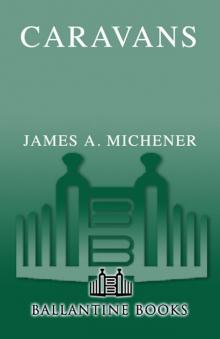 Caravans
Caravans Creatures of the Kingdom: Stories of Animals and Nature
Creatures of the Kingdom: Stories of Animals and Nature Iberia
Iberia Hawaii
Hawaii The Watermen: Selections From Chesapeake
The Watermen: Selections From Chesapeake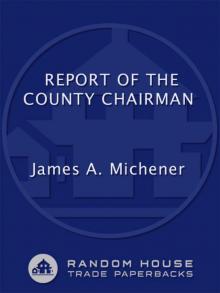 Report of the County Chairman
Report of the County Chairman The Covenant
The Covenant The Bridges at Toko-ri
The Bridges at Toko-ri Matecumbe
Matecumbe Journey: A Novel
Journey: A Novel Centennial
Centennial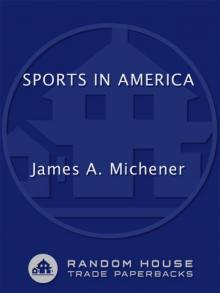 Sports in America
Sports in America Texas
Texas Miracle in Seville
Miracle in Seville This Noble Land: My Vision for America
This Noble Land: My Vision for America Tales of the South Pacific
Tales of the South Pacific Bridges at Toko-Ri
Bridges at Toko-Ri Space: A Novel
Space: A Novel Presidential Lottery
Presidential Lottery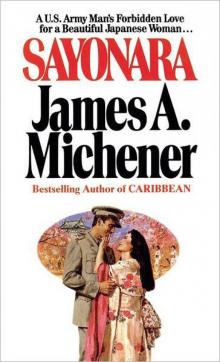 Sayonara: A Novel
Sayonara: A Novel This Noble Land
This Noble Land The Covenant: A Novel
The Covenant: A Novel Miracle in Seville: A Novel
Miracle in Seville: A Novel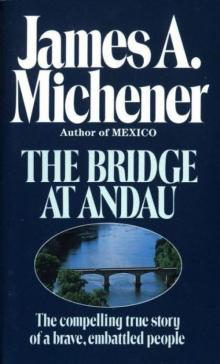 The Bridge at Andau
The Bridge at Andau Source
Source The Source: A Novel
The Source: A Novel Journey
Journey Recessional: A Novel
Recessional: A Novel Legacy: A Novel
Legacy: A Novel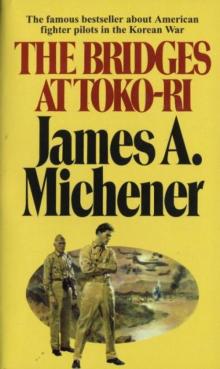 The Bridges at Toko-Ri: A Novel
The Bridges at Toko-Ri: A Novel Poland: A Novel
Poland: A Novel